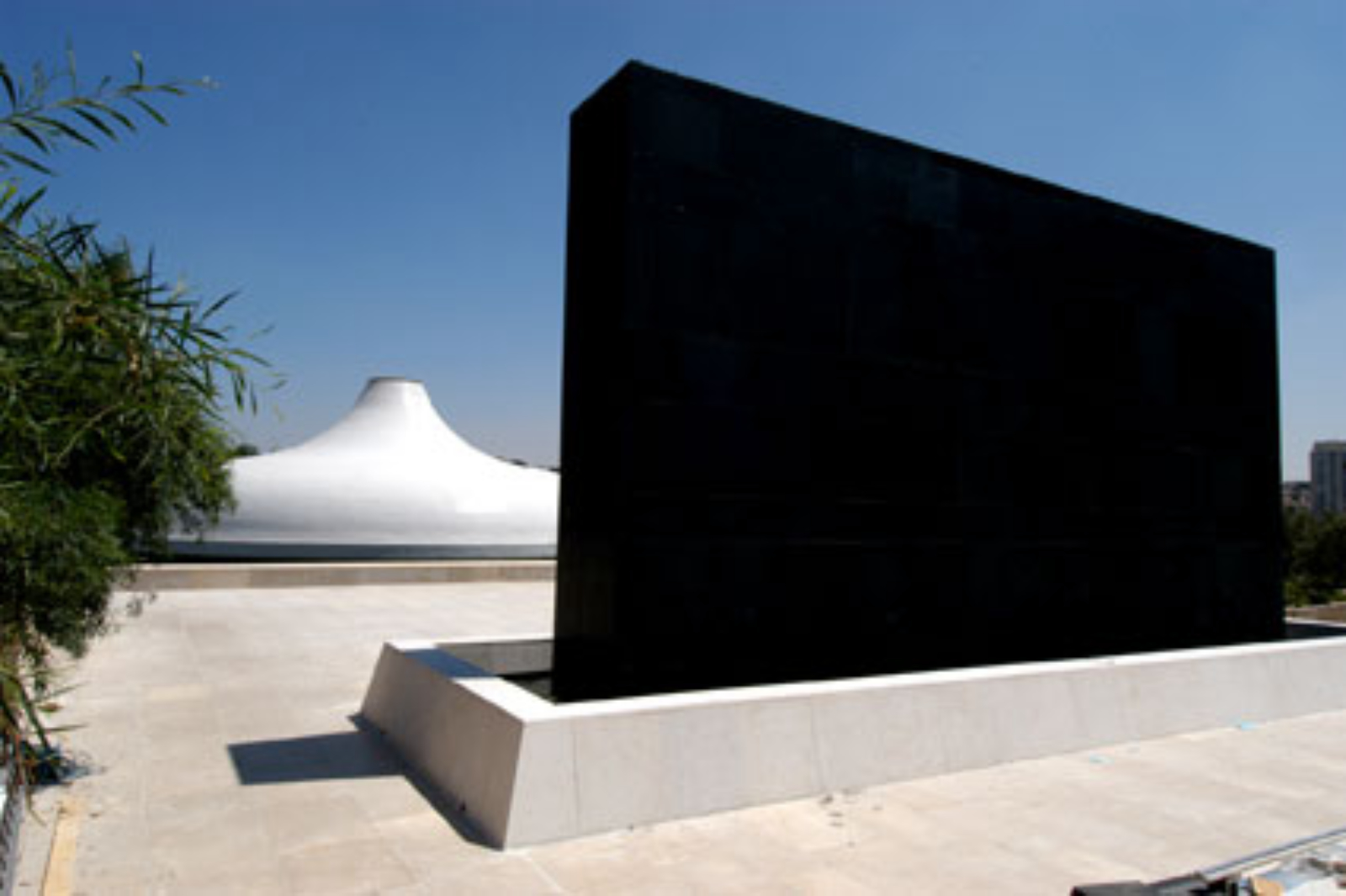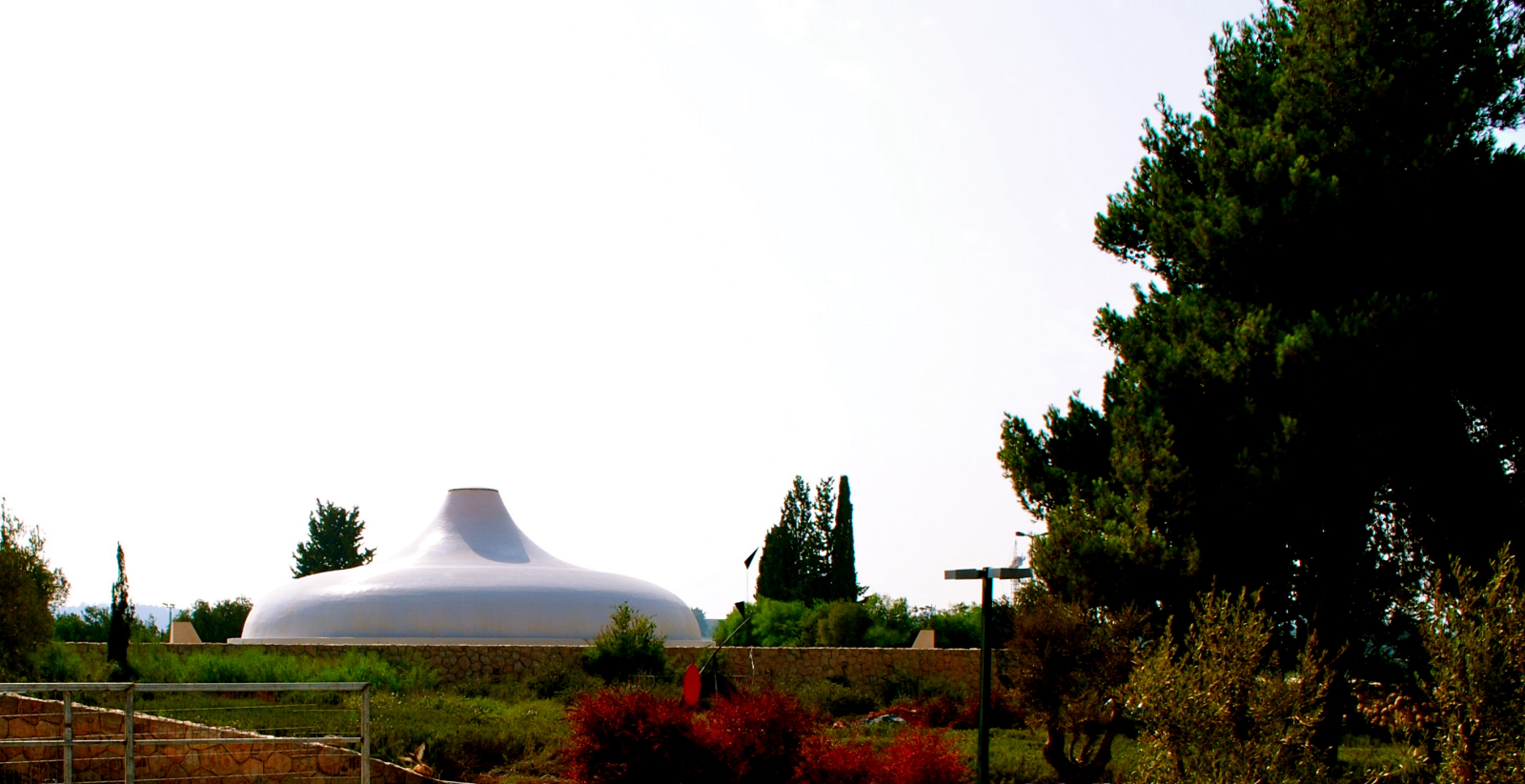Site overview
The Shrine of the Book was built in 1965 to the designs of American architects Frederick Kiesler and Armand Phillip Bartos. It was meant to house, exhibit, and, most uniquely, symbolically represent in architectural terms the Dead Sea Scrolls, a collection of approximately 900 manuscripts and manuscript fragments found in caves at Wadi Qumran between 1947 and 1956. The scrolls comprise the biblical and exegetical canon of the obsolete Essene sect of Judaism, and were composed, in Hebrew, Aramaic, and Greek, between 150 BC and 70 AD. Today, the Shrine is also host to the Aleppo Codex, a 10th century AD text accepted to be the nearest evolutionary text to the modern Hebrew Old Testament. The Israel Museum, of whose extensive campus the Shrine is a part, has described the Shrine as a "symbolic building, a kind of sanctuary intended to express profound spiritual meaning," whose "location next to...the Knesset, key government offices, and the Jewish National and University Library attests to the degree of national importance that has been accorded the ancient texts and the building that preserves them."






